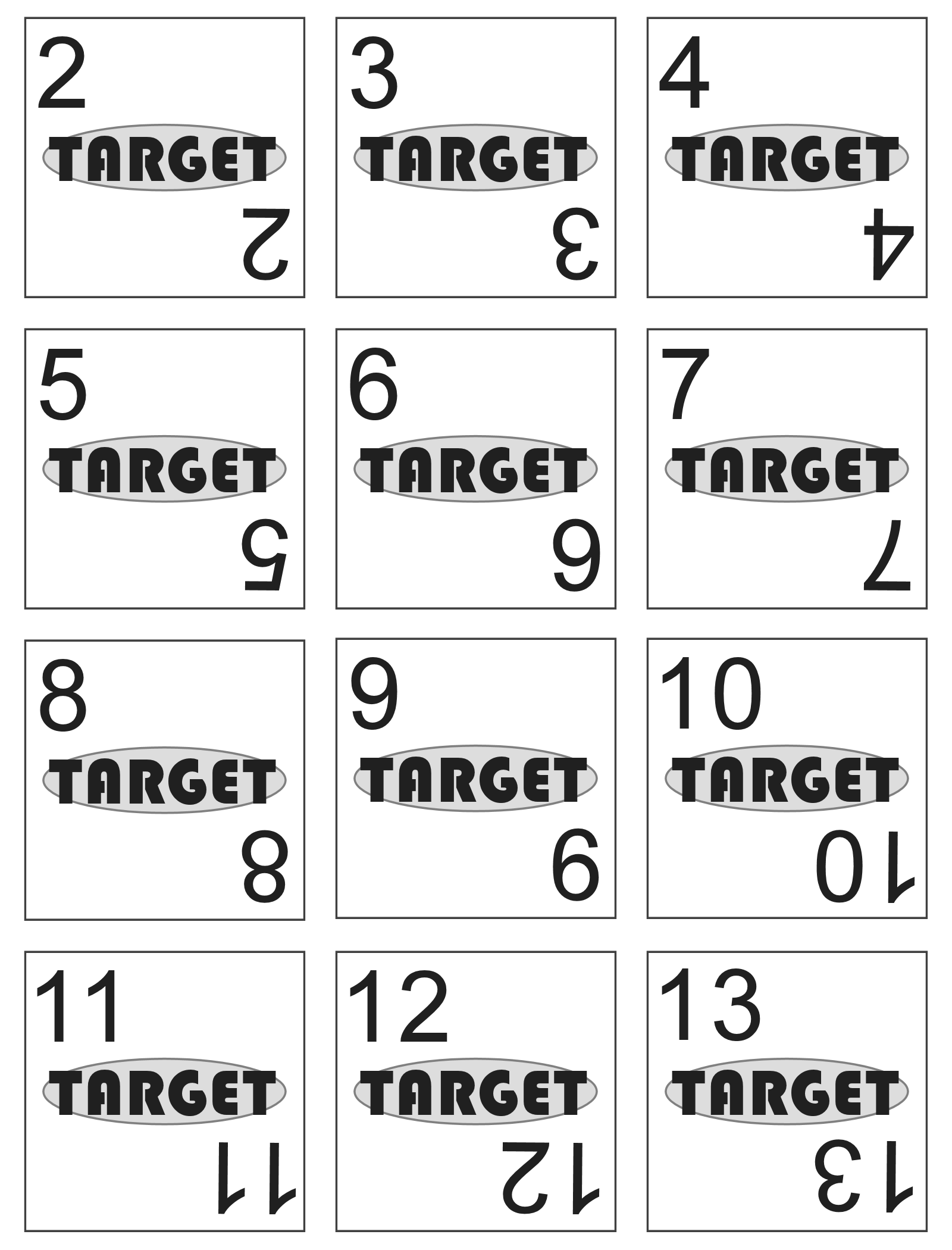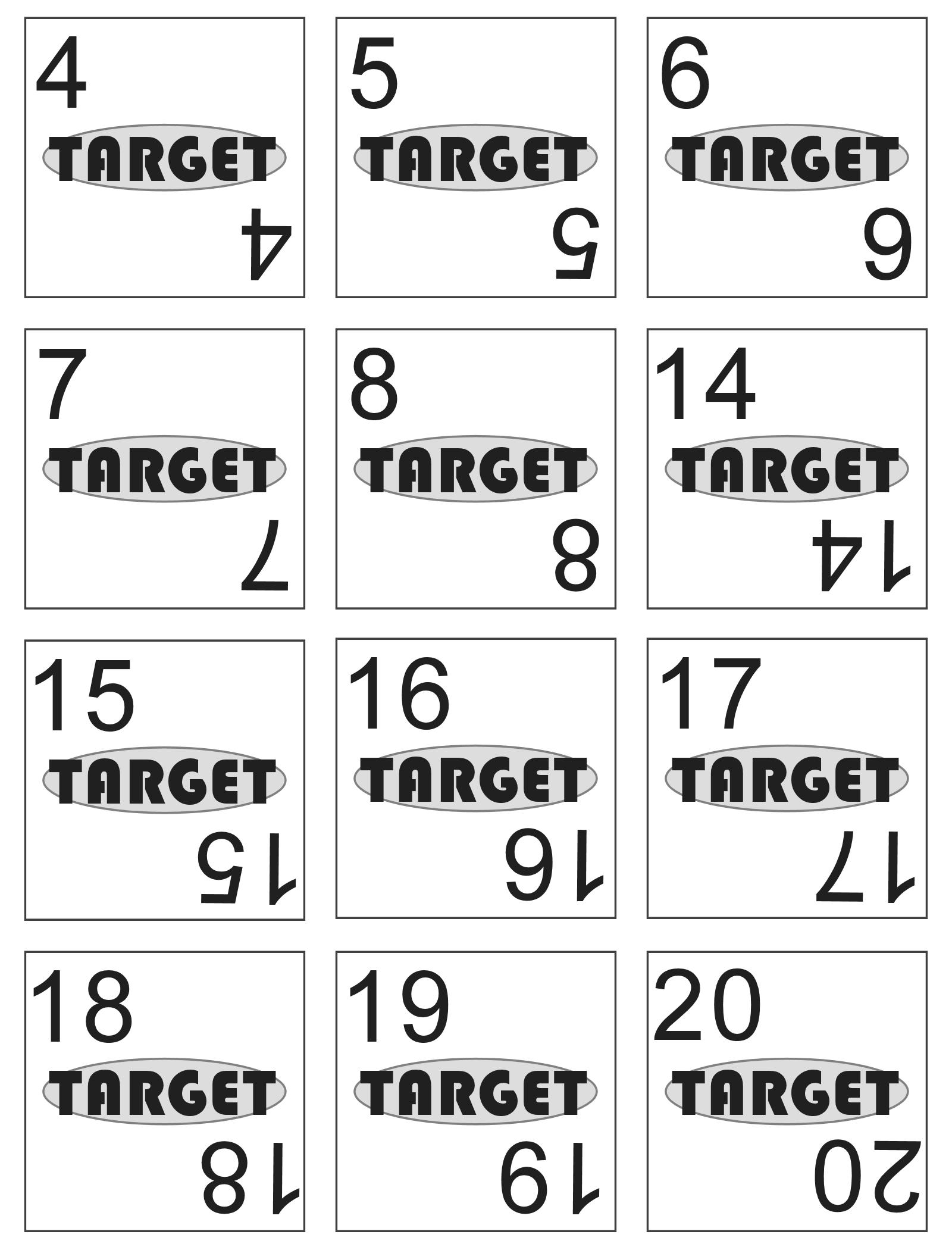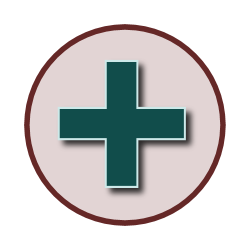Target Game - Practicing Addition
Lesson Plans > General > GamesSlide Show


Lesson Plan/Article
Target Game - Practicing Addition

Since I spend most of my time teaching high school students, I haven't spent much time working with younger students and developing ideas for teaching math to kids. But now my son is five years old, and he's starting to think about addition. He'll announce, out of the blue, that three plus four is seven, or five plus one is six. He's fascinated with the idea that, since he's three years older than his sister, if he can add three to her age, that'll be his age. So he'll tell us, "When S is seven, I'll be ten."
So I've started pulling out a deck of cards and playing some number games with him. I've found some games that encourage counting, but not many that encourage addition. So I've developed my own game.
This game requires two decks of cards. The first deck can be a standard deck, with all the face cards removed. Leave the aces in, but make sure the child understands that an ace is the same as a one. If you don't want to deal with the ace, you can remove it, but then you should also remove the two and three from the second deck.
The second deck is formed by printing the images attached to this lesson plan. Suggestions on constructing the second deck are included at the end of the lesson.
For the sake of these instructions, the first deck (the larger one) will be called the "draw stack" and the second deck will be called the "target stack". The rules of the game are as follows
Setup
- Each player receives two cards from the draw stack. Players can keep their cards secret, or display them. When I play with my son, we each put our cards face-up. This allows me to help him. The remainder of the draw stack is placed face-down on the table, with one card turned over as the first card on the discard pile.
- The target stack is also placed face-down. The first card is drawn and placed face-up on the table.
A Turn
- If your two cards add up to the target card or one of your cards matches the target card, you may take the target card. The card or cards you used to form the target are placed on the discard pile.
- If you cannot form the target, you may either take the top card from the draw stack, or from the discard pile. If your new card matches the target number, or if two or more of your cards add to the target number, take the target card. The cards you used to form the target are placed on the discard pile.
- If you took a target card, turn over the next target card and lay it face up on the table.
- If you have less than two cards, draw one from the draw stack.
- If you have more than two cards, you must choose one card to discard.
- If the draw stack is used up, shuffle the discard pile and use it as the new draw stack. Don't forget to flip one card to start the discard pile.
End Game
The game ends when all the target cards have been taken. Each player counts the target cards in their possession. Whoever has the most target cards wins.
Building the Target Stack
Printable Target Stack Page One
Printable Target Stack Page Two
The graphics included with this lesson have cards from 2 to 20. The first graphic contains the 2 - 13 cards. The second graphic contains 14 - 20. It also includes duplicates of the 4 - 8 cards. These cards are included primarily because they are easier numbers for young children to build, so including them gives the young ones more opportunity to have turns without frustration. Or, if you are playing with more than one child, it makes the game last for a few more turns.
If you are working with young children, you may wish to limit your target stack. For example, when playing with my five-year-old, I don't use target cards over 12. Gauge the ability of your players, and tweak the game accordingly.
You can also limit the number of cards in the draw stack by removing higher cards. For example, you could play with A - 7, removing the eights, nines, and tens. However, if you do this, don't forget that with a high card of 7, 14 is the highest target you can form (without using three cards), so you should probably remove everything above fourteen.
A final note: "homemade" cards are notoriously difficult to shuffle. The good news is, you don't need to. The cards are auto-shuffled by virtue of the fact that they end up split between the players and then recollected. Besides, the actual order of the target cards really doesn't matter; they could be exactly the same from one game to the next, and it would still be an entirely different game. So don't bother shuffling.

